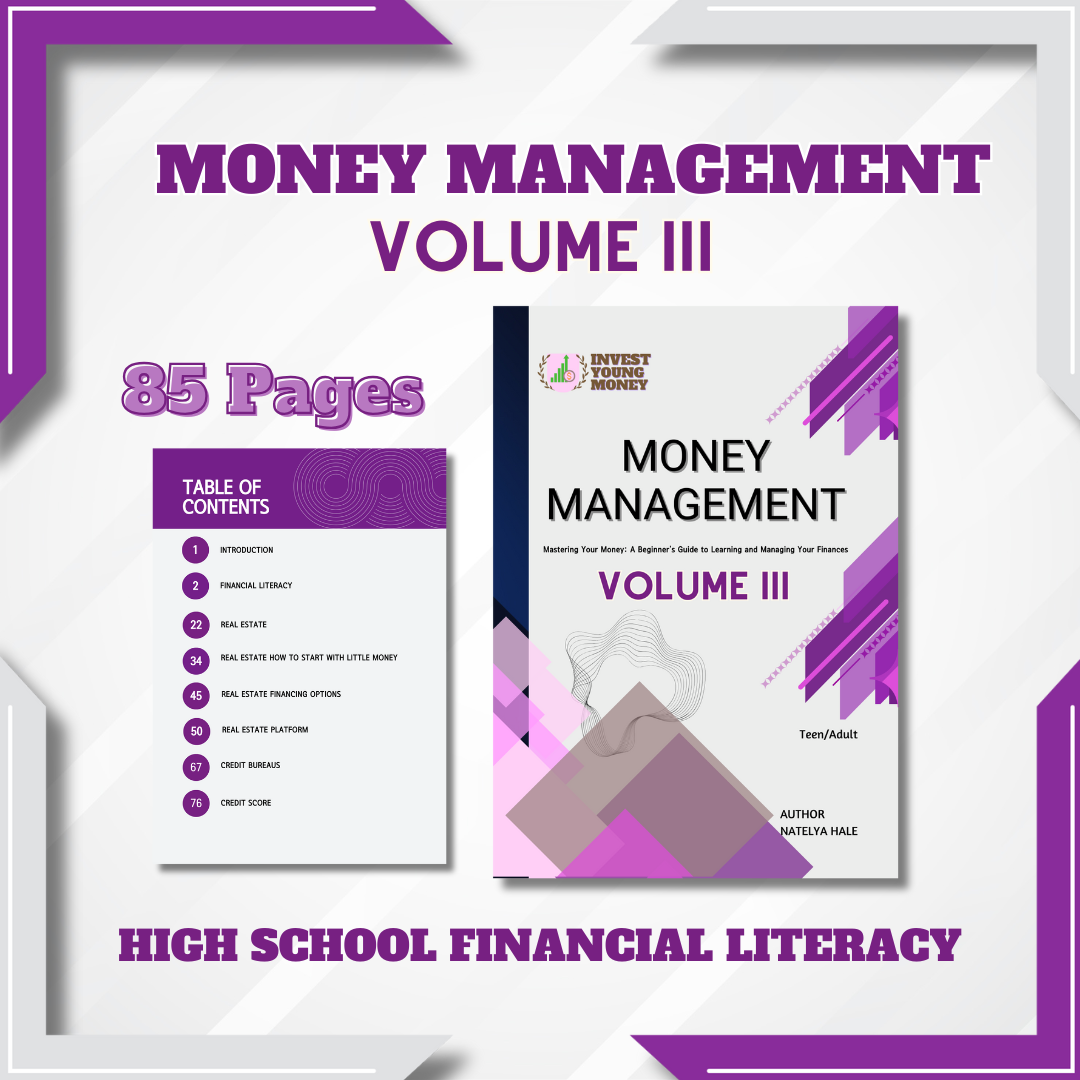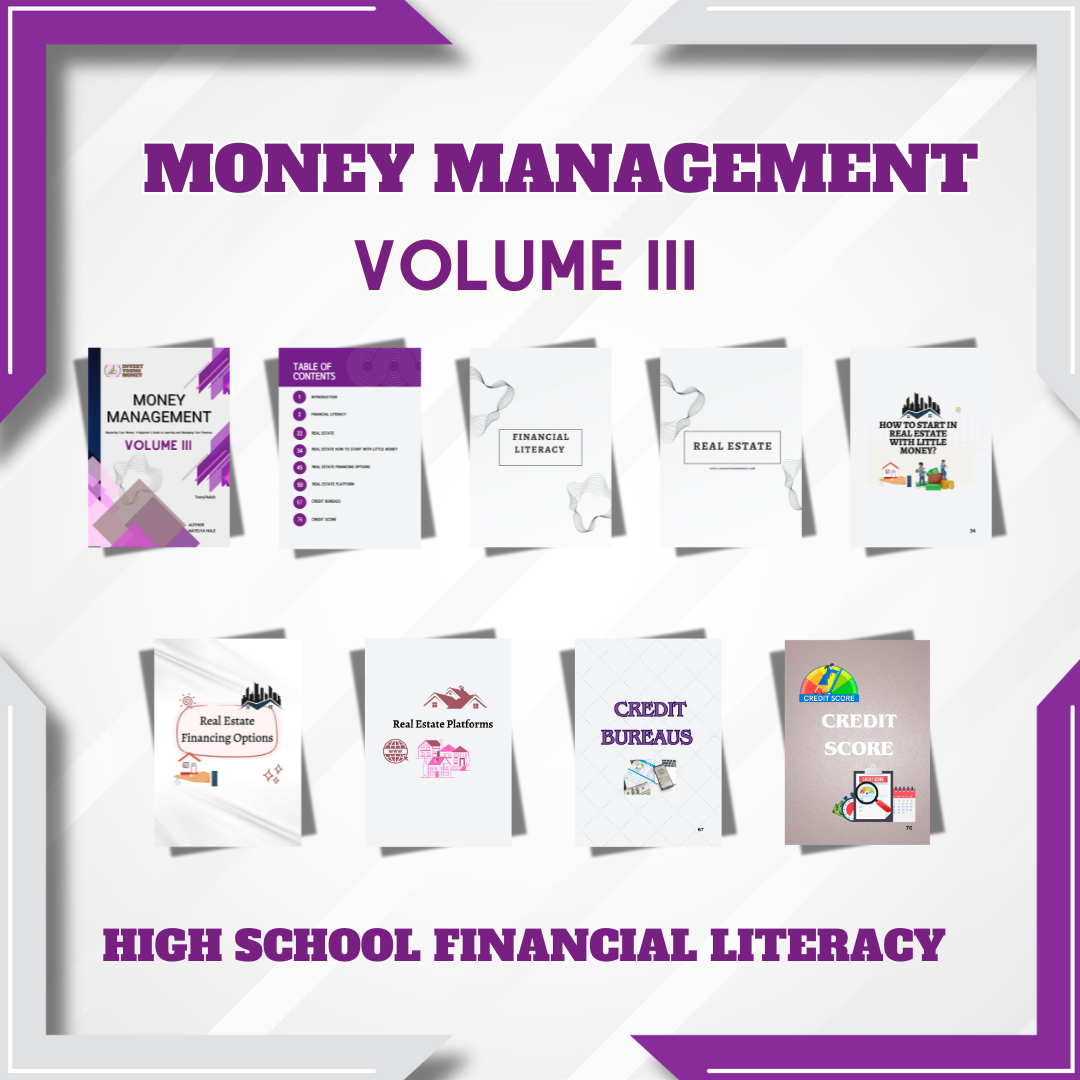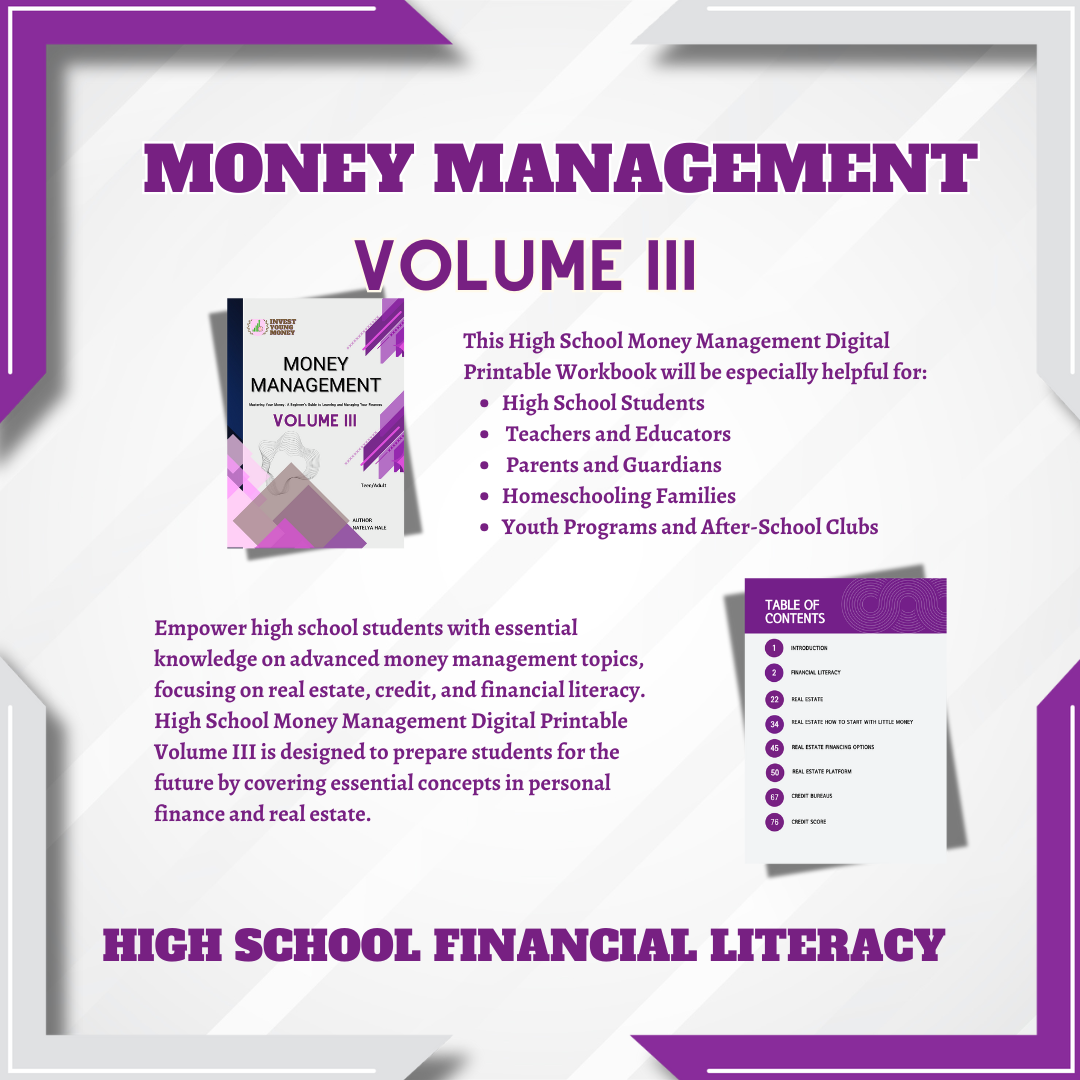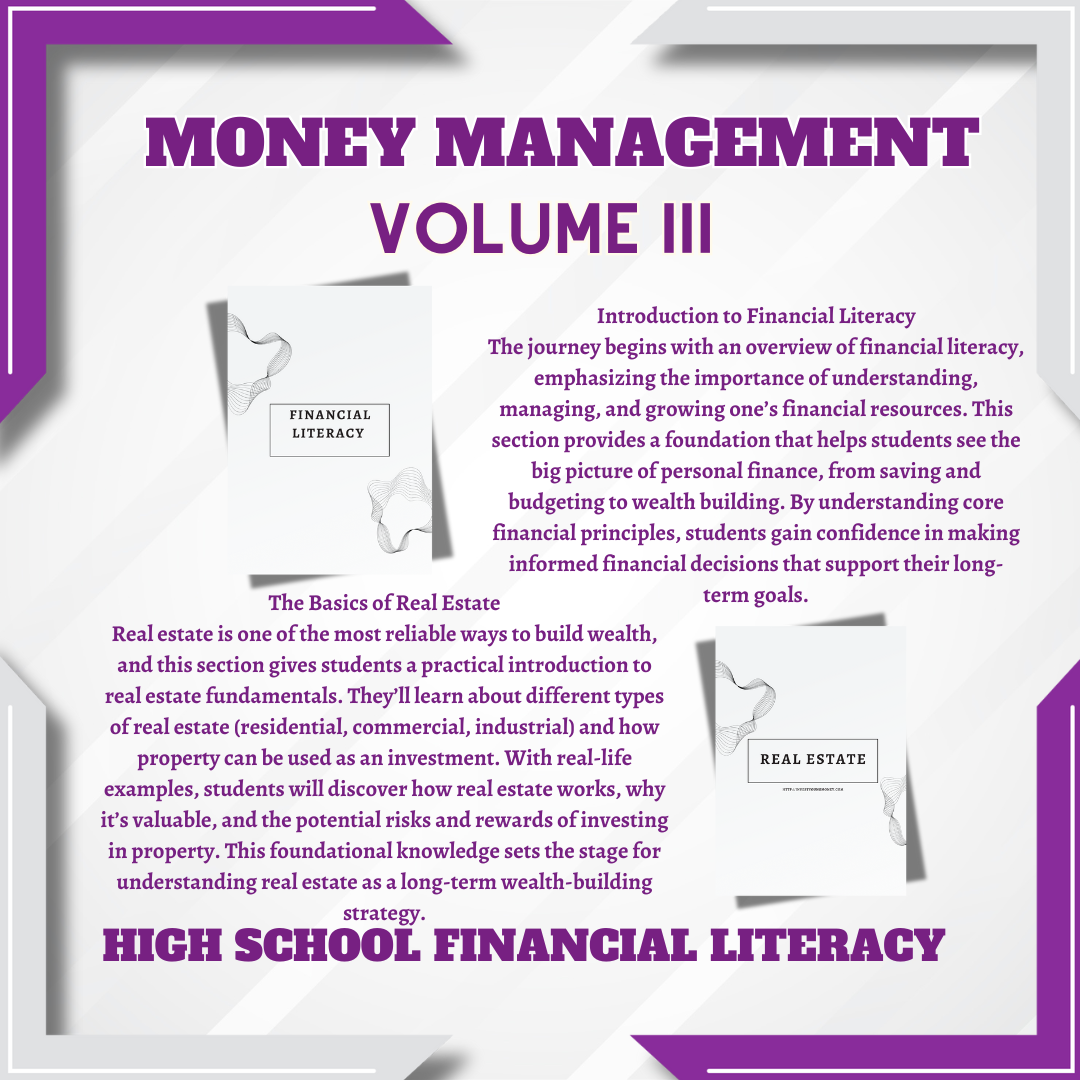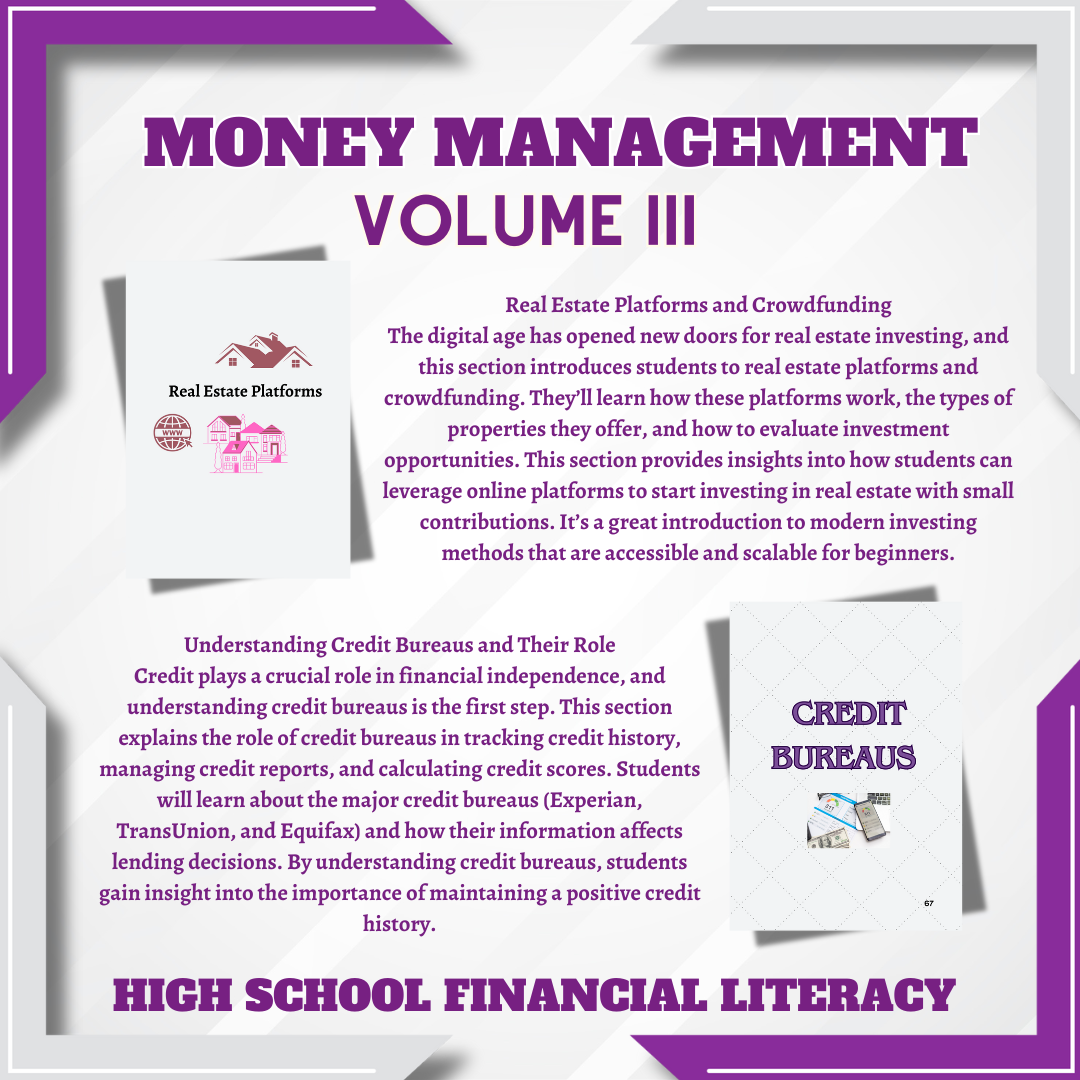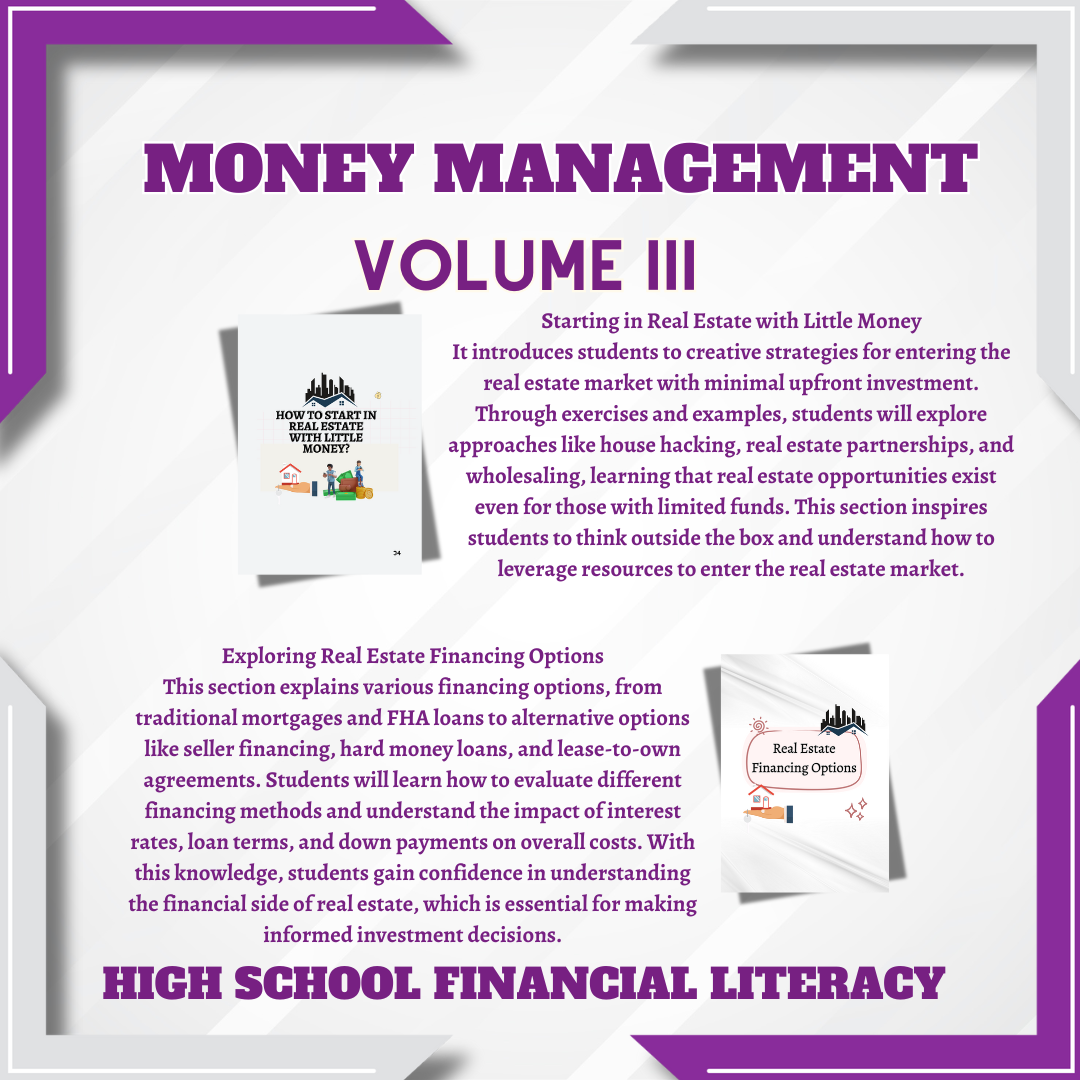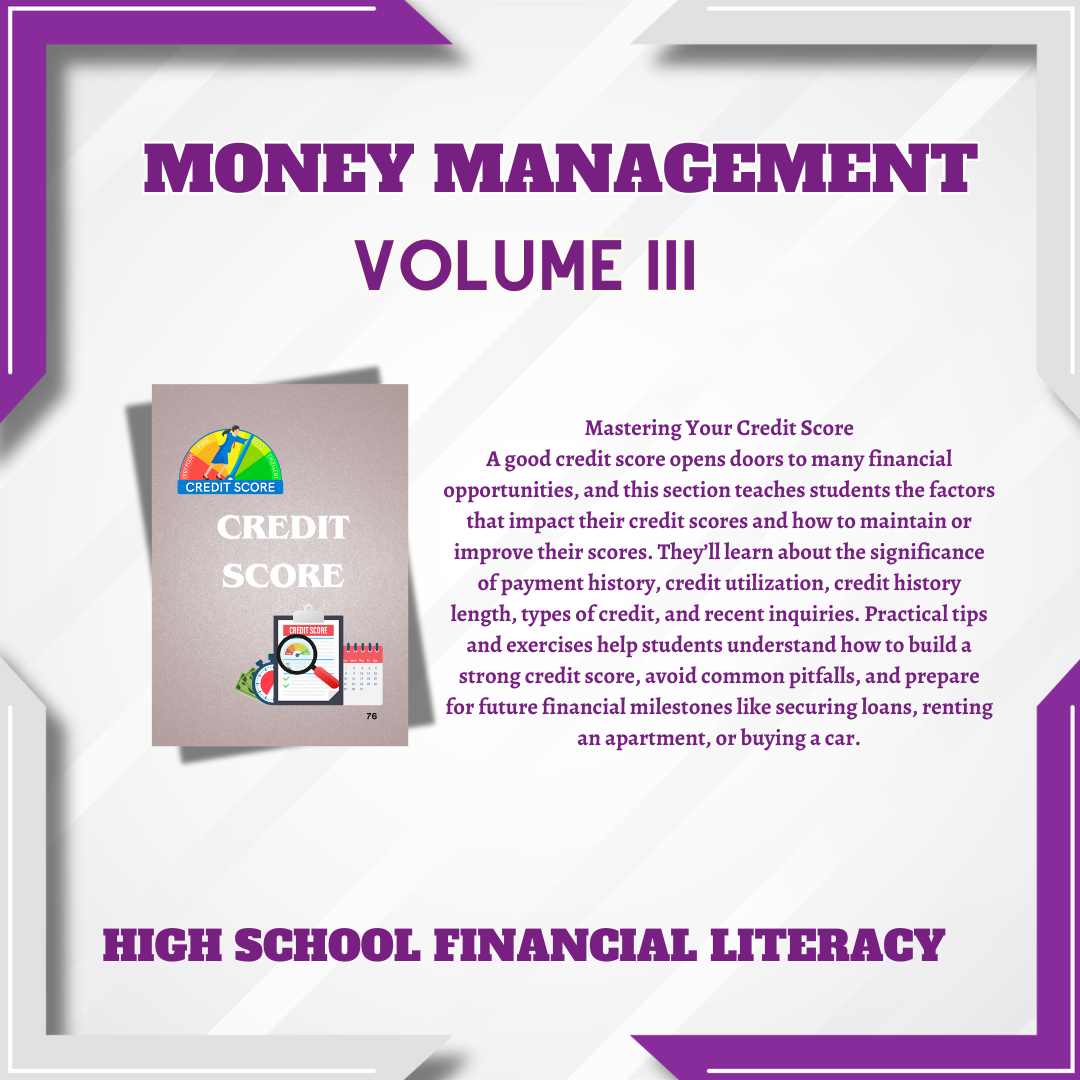InvestYoung
High School Money Management Digital Printable Volume III Financial Literacy Book for Teenager Money Learning Book for Kids Financial Guide
High School Money Management Digital Printable Volume III Financial Literacy Book for Teenager Money Learning Book for Kids Financial Guide
Couldn't load pickup availability
High School Money Management Digital Printable Volume III
Empower high school students with essential knowledge on advanced money management topics, focusing on real estate, credit, and financial literacy. High School Money Management Digital Printable Volume III is designed to prepare students for the future by covering essential concepts in personal finance and real estate. This interactive workbook introduces complex topics in an accessible way, making it ideal for classrooms, homeschoolers, or independent study. It’s packed with practical insights and engaging exercises that make learning about real estate and credit management easy and enjoyable.
Introduction to Financial Literacy
The journey begins with an overview of financial literacy, emphasizing the importance of understanding, managing, and growing one’s financial resources. This section provides a foundation that helps students see the big picture of personal finance, from saving and budgeting to wealth building. By understanding core financial principles, students gain confidence in making informed financial decisions that support their long-term goals.
The Basics of Real Estate
Real estate is one of the most reliable ways to build wealth, and this section gives students a practical introduction to real estate fundamentals. They’ll learn about different types of real estate (residential, commercial, industrial) and how property can be used as an investment. With real-life examples, students will discover how real estate works, why it’s valuable, and the potential risks and rewards of investing in property. This foundational knowledge sets the stage for understanding real estate as a long-term wealth-building strategy.
Starting in Real Estate with Little Money
For those wondering how they can get started in real estate without large amounts of capital, this section is invaluable. It introduces students to creative strategies for entering the real estate market with minimal upfront investment. Through exercises and examples, students will explore approaches like house hacking, real estate partnerships, and wholesaling, learning that real estate opportunities exist even for those with limited funds. This section inspires students to think outside the box and understand how to leverage resources to enter the real estate market.
Exploring Real Estate Financing Options
Financing is one of the most crucial aspects of real estate investing. This section explains various financing options, from traditional mortgages and FHA loans to alternative options like seller financing, hard money loans, and lease-to-own agreements. Students will learn how to evaluate different financing methods and understand the impact of interest rates, loan terms, and down payments on overall costs. With this knowledge, students gain confidence in understanding the financial side of real estate, which is essential for making informed investment decisions.
Real Estate Platforms and Crowdfunding
The digital age has opened new doors for real estate investing, and this section introduces students to real estate platforms and crowdfunding. They’ll learn how these platforms work, the types of properties they offer, and how to evaluate investment opportunities. This section provides insights into how students can leverage online platforms to start investing in real estate with small contributions. It’s a great introduction to modern investing methods that are accessible and scalable for beginners.
Understanding Credit Bureaus and Their Role
Credit plays a crucial role in financial independence, and understanding credit bureaus is the first step. This section explains the role of credit bureaus in tracking credit history, managing credit reports, and calculating credit scores. Students will learn about the major credit bureaus (Experian, TransUnion, and Equifax) and how their information affects lending decisions. By understanding credit bureaus, students gain insight into the importance of maintaining a positive credit history.
Mastering Your Credit Score
A good credit score opens doors to many financial opportunities, and this section teaches students the factors that impact their credit scores and how to maintain or improve their scores. They’ll learn about the significance of payment history, credit utilization, credit history length, types of credit, and recent inquiries. Practical tips and exercises help students understand how to build a strong credit score, avoid common pitfalls, and prepare for future financial milestones like securing loans, renting an apartment, or buying a car.
The High School Money Management Digital Printable Volume III is a comprehensive resource designed to provide young adults with a deep understanding of advanced financial topics. With a focus on real estate and credit management, this workbook empowers students to think strategically about their future. Through interactive exercises, clear explanations, and real-world examples, students will develop the financial literacy skills needed to navigate real estate, understand credit, and make decisions that align with their financial goals. This workbook is perfect for high school students eager to take control of their financial journey, build wealth, and achieve financial independence.
Copyright Policy
Your purchase of these resources does not grant you any copyright ownership. The rights to reproduce, distribute, or resell these materials for commercial purposes remain prohibited. These items are intended for PERSONAL USE ONLY.
For additional products, please visit my store.
Share
